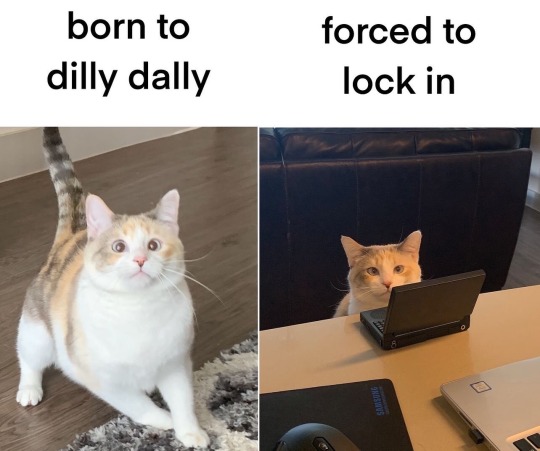Text
America has a weird relationship with cults where they’re terrified of small cults (or organizations they think are cults) but completely normalized massive cults that hurt many more people (eg: LDS Church, Jehovah’s Witnesses, the Amish, Scientology, most Megachurches)
166K notes
·
View notes
Text
disney concept art: the most beautiful dynamic original thing i have ever seen
disney finished project: rubber same face minimalism regurgitated plots
369K notes
·
View notes
Text
growing up, my mum always told me, whenever i went to the doctors or any sort of health professional, that it was important that i told them that i was hypermobile. she'd done the tests with me (herself being hypermobile and disabled in large part because of it) and though she didn't know the details, she knew that hypermobility was important to have in my health record.
so it was to my great surprise and displeasure that, whenever i told doctors i was hypermobile, it was skipped over. never addressed, never touched on, not even a comment to belie what that meant for me. i myself didn't know the impact hypermobility could have on a person, but my mother had been insistent about that fact. it was important, so why did no one else seem to think so?
i grew up with kids in school who were on the extreme ends of hypermobility. i knew a boy in middle school who could put both feet behind his head. i knew a girl in high school with long, spindly fingers who showed me how far backwards her arm could bend.
both of them had health problems, which became more profound as they aged. i never knew the details, but it stuck out that they were hypermobile, and so was i, and with my own health declining there HAD to be a connection.
common knowledge gives the vague definition of hypermobility as extra stretchy muscles, of being double-jointed. it comes with warnings not to push your hypermobile body into the extremes. don't overextend, you will hurt yourself.
the warnings are warranted. the importance isn't overplayed. these things i knew, but i didn't know why. and without knowing why, they were warnings that i could never truly obey, despite how conservative i became with my movements in a vain attempt to protect what little ability i had left.
hypermobility is NOT stretchy muscles. muscles are supposed to stretch. in fact, it's important to their health (those conservative movements prolly hurt more than helped!). hypermobility affects connectives tissues, and lands under the umbrella of Ehlers-Danlos Sydromes (there are a few) which can range in severity from affecting skin and tendons to affecting blood vessels and organs.
severity is rare, and much easier to catch. this post is for the people who are "a little hypermobile" so that they can understand what makes their body different.
a muscle and its associated tendons are like a hammock. the muscle is the fabric you lie in, stretching to accomodate the load. tendons are the rope that attaches the fabric to the trees, providing a secure anchor for the muscle to operate.
so, what happens when the ropes on the hammock are also stretchy? well, you sit in the hammock and your ass hits the ground.
now imagine that the fabric of the hammock has the ability to clench like a muscle. a normal hammock doesn't need to work that hard to stop ass from meeting ground, because it has sturdy anchors. a hammock with stretchy rope, however, must exert several times more effort, because the more the muscle pulls, the more the tendons stretch.
in short, hypermobility forces your muscles to work harder, because they must first pass the threshold of stretch the tendons are capable of before it can actually do the task it's meant to do. the stretchier the tendons, the harder the muscle needs to clench, the easier it is to overwork.
this info reframed everything i was doing with my body. small tasks of strength required the effort of much larger tasks, and larger tasks ranged from extremely difficult to impossible. holding my arms up so i could work above my head required monumental effort. with an anatomical peculiarity of the feet, i needed to use several muscles in my calves and hips just to stand without losing balance.
so no fucking wonder i crashed and burned in my 20s, when everything i did took all of my strength to accomplish. no wonder i would contort myself out of shape, so flexible that i could anchor myself into extreme poses just to give my muscles a moment of relief, overstretching myself without ever realizing why, and what damage i could be doing.
so, some things to remember:
overextending isn't good for you, but it shouldn't be your biggest concern. instead, be aware of overexertion, both how LONG you are using a muscle without breaks and how HARD you are using it.
small, frequent breaks are your best friend if you need to do something for awhile.
when you take breaks, stretch the muscles you'd been using.
if you need to exert effort to maintain a pose (whether it's sitting, standing, etc) examine whether you need to be clenching those muscles, and why.
actually whenever you are using muscles, try to train yourself to use as few as possible. you can practice by sitting or standing, and relaxing as many muscles as you can before you tip over. finding a sense of balance can make your life so much easier.
become acquainted with what relaxed muscles feel like. chronic tension can distort your perception of this, and result in habitual tension.
so yeah. if you're hypermobile, that's important. don't let a doctor's dismissal make you think otherwise. take care of yourself and know what you are and aren't capable of.
7K notes
·
View notes
Text
I did a fun little choose your own adventure thing on my Twitter! He could explode or get a kiss

The results [SHOCKING‼️‼️]:

He exploded :/
2K notes
·
View notes
Text


The sad man hour is actually really funny to me
14K notes
·
View notes
Text

POV: You're about to ask Goombella to use Tattle 📗✨
5K notes
·
View notes
Text
54K notes
·
View notes
Text
Speaking of linguistics, there’s one particular linguistic tick that I think clearly separates Baby Boomers from Millennials: how we reply when someone says “thank you.”
You almost never hear a Millennial say “you’re welcome.” At least not when someone thanks them. It just isn’t done. Not because Millenials are ingrates lacking all manners, but because the polite response is “No problem.” Millennials only use “you’re welcome” sarcastically when they haven’t been thanked or when something has been taken from/done to them without their consent. It’s a phrase that’s used to point out someone else’s rudeness. A Millenial would typically be fairly uncomfortable saying “you’re welcome” as an acknowledgement of genuine thanks because the phrase is only ever used disengenuously.
Baby Boomers, however, get really miffed if someone says “no problem” in response to being thanked. From their perspective, saying “no problem” means that whatever they’re thanking someone for was in fact a problem, but the other person did it anyway as a personal favor. To them “You’re welcome” is the standard polite response.
“You’re welcome” means to Millennials what “no problem” means to Baby Boomers, and vice versa.The two phrases have converse meanings to the different age sets. I’m not sure exactly where this line gets drawn, but it’s somewhere in the middle of Gen X. This is a real pain in the ass if you work in customer service because everyone thinks that everyone else is being rude when they’re really being polite in their own language.
160K notes
·
View notes
Text
wild how like PCOS, endometriosis, vaginismus & hell, even frequent yeast infections are “mysterious” with no well known cause and little to no decent treatment, but we have tons of supposedly well researched body fat removal methods, about 20 different kinds of breast implants, laser hair removal, and 100 different dermatologist recommended anti aging creams. we sure had the money and brainpower to cure those “diseases”
113K notes
·
View notes
Text
Actually, fuck it, here
If anybody is interested in Chinese folklore, here you go!
Have all the old scans I have of stories from my chinese literature, folklore, and popular culture class.
It's free university lol. Unfortunately a lot of it we read straight from the main book we had (Ma and Lau, ed. Traditional Chinese Stories: Themes and Variations), which had a lot of interesting things in it (like the whole genre of snake women and related stories that are mentioned in the final PDF, but which I unfortunately have no stories for), and it is now in storage, nowhere near me, and I therefore cannot scan any of it (Actually, it's possible i even left it behind when i was getting rid of things to move? /: idk. Guess I'll find out at some point). If you're interested in more Chinese folklore and can get your hands on a copy, though, I suggest it; your local library might have it! But anyway, what I can give you is these PDFs!
Gonna split this into 2 sections for clarity (and turns out I'm gonna have to do the second part in a reblog because of the link limit. Sigh. May as well section off the first part too)
1K notes
·
View notes
Text
How to draw: Not white characters
How to draw a Black person
How to colour Black people skin tones
How to draw dreadlocks
How to draw African hair
How to draw curly hair
How to draw braids
How to draw braids part 2
How to draw cornrows
How to draw Bantu knots
How to draw two strand twists
How to draw an East Asian person
How to colour darker skin tones with alcohol markers
How to draw hijabs/traditional Muslim hair coverings (note, he used incorrect terminology, what he called a burqa was actually a niqab! Sorry for the mistake)
How to draw a hijabi girl
All links and art provided by @ itsajart on TikTok
Before you go “mY aRt sTyLe iS dIfFrEnT tHoUgH” you can moderate it and play around with your style to get it to fit.
69K notes
·
View notes
Text

how is you a 7 YEAR old even ABLE TO DO THIS?
74 notes
·
View notes





